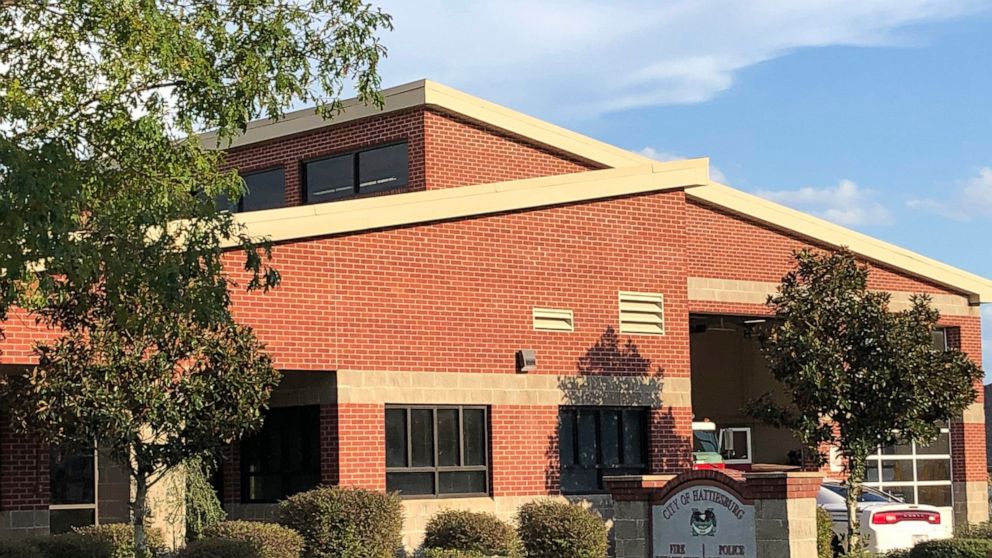[ad_1]
There’s little disagreement that the object found in a white Mississippi firefighter’s locker was a hangman’s noose. But as with many things in America these days, there’s deep disagreement about what it meant.
To some it was a reminder of lynchings that took hundreds of black lives in Mississippi, and it had no place on city property — though there was no suggestion that firefighter Shelton Russell had ever displayed it or used it to intimidate anyone.
To Russell it didn’t carry that meaning. If anything, it symbolized America’s lawless wild-west culture, where cowboy vigilantes meted out rough justice.
It happened in August in the town of Hattiesburg, home to two universities and about 46,000 people. About 53% of the town’s residents are black, and about 42% are white.
City officials have declined to make anyone available for interviews because it’s a personnel matter and might involve future litigation. Many details emerged during a civil service commission hearing Oct. 10 as well as documents released to The Associated Press.
On Friday, Aug. 2, two firefighters working at Station 8 saw a noose hanging in the open locker of Russell, a lieutenant and station manager.
“It was like shock at first,” said firefighter Kentavius Reed, testifying about seeing it. When the city’s lawyer asked why he was shocked, the 24-year-old African American described how nooses had been used to hang black people: “I was kind of like ‘Why would you have it in your locker?’”
The other firefighter, a white engineer named Zeb Mitelsztet, testified he was “shocked and disturbed” to find the noose and said he’d always considered nooses a representation of racial hatred.
But Russell, a 22-year department veteran, didn’t see it that way. In statements, and in talking to the commission and to The Associated Press, he described how he’d been watching a western movie with a colleague after taking a ropes course years ago.
Russell said he didn’t know how to tie a noose, and his colleague showed him how it was done. Russell said he put it in his locker and never thought about it again. He said he still doesn’t understand how it’s offensive.
“African-Americans were hung by it. So were whites. So were horse thieves and you know, I’m a cowboy. I’m out in the country. I ride a tractor every day. That’s what I go back to, cowboys and that’s how it got started, with watching the Western,” Russell, who raises chickens and grows hay, told the AP.
Both firefighters who saw the noose took photos and sent them to others. By Monday word had gotten back to Russell that people were talking about it. He went to the station to confront the two firefighters about “spreading rumors of racism,” he said in a statement. The confrontation grew heated.
Both the noose and the confrontation played a role in Russell’s punishment. Fire chief Sherrocko Stewart demoted him, suspended him without pay for a month and required him to undergo counseling. Russell appealed but the commission upheld the punishment; Russell resigned.
For some, Russell’s inability to see the noose’s fraught racial history was the problem. City Attorney Randy Pope said during the hearing he can understand Russell might not understand the noose’s symbolism, saying he didn’t grow up African American.
But Pope, who is white, said he educated himself about what the noose meant to African Americans: “I went and looked, spent some time on the internet, what’s involved in that symbol … And it is a very serious symbol.”
City Council member Deborah Delgado said she was “dumbfounded” that Russell wouldn’t know the potent symbolism of the noose, especially with Mississippi’s history of racial strife.
According to the Equal Justice Initiative, Mississippi had one of the highest rates of lynchings across the South.
Some were in Hattiesburg.
William Sturkey, who wrote “Hattiesburg: An American City in Black and White,” describes multiple lynchings, including one in 1903 when 500 people pulled a black man named Amos Jones from the city jail and hung him from a telegraph pole. Then they riddled his body with bullets.
One expert who has extensively studied the history of lynchings in the South says whites and blacks tend to view these symbols very differently. A person doesn’t have to be racist to not understand how impactful something like a noose can be to black people, said retired University of Georgia professor E.M. Beck. He said someone like Russell “just basically doesn’t have the experience base to realize how pertinent and potent that symbol can be within the black community.”
Hattiesburg’s noose issue has drawn a little attention on social media. Some acquaintances of Russell back him up, saying on Facebook that simply having a noose wasn’t a crime and that Russell treated everyone he worked with fairly. Others question his sincerity and how he couldn’t know its racial overtones.
Russell’s lawyer, Michael Adelman, suggested Russell was treated harshly because of political pressure on the fire chief — something Stewart denied. Adelman also suggested one firefighter was retaliating against Russell for previous slights — something the firefighter denied.
Russell said if he’d known the noose was offensive, he would’ve taken it home. But he feels the situation escalated so quickly, he never got a chance.
“Anything could be offensive. But unless it’s brought to my attention, which it never was till after the fact, then how do I know?” he said after the hearing.
——
Follow Santana on Twitter @ruskygal.
[ad_2]
Source link

